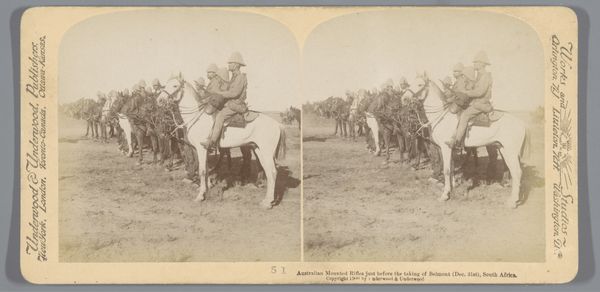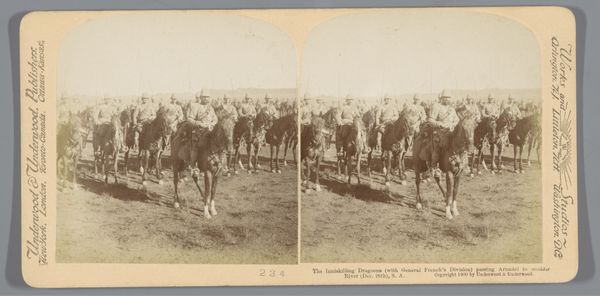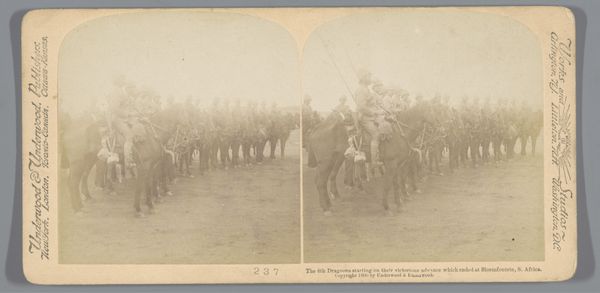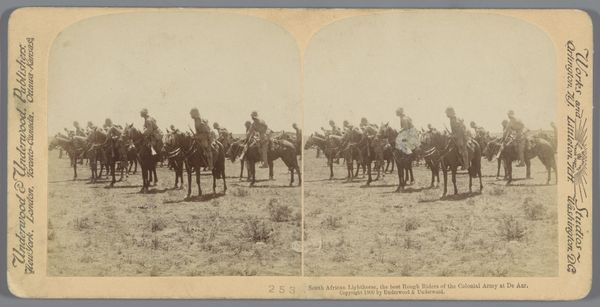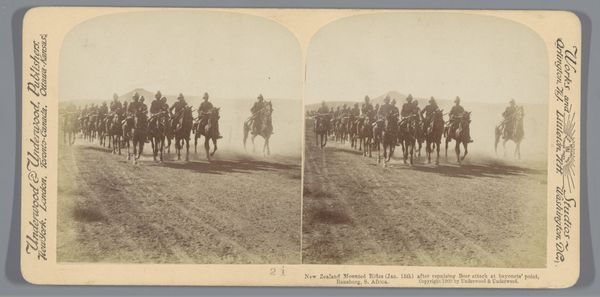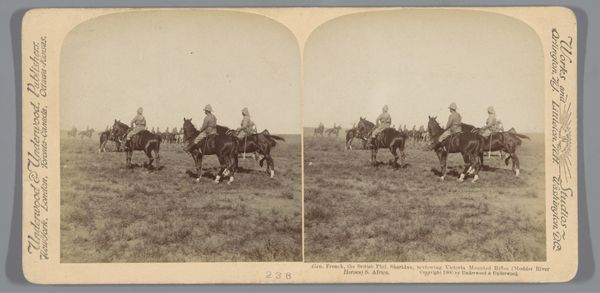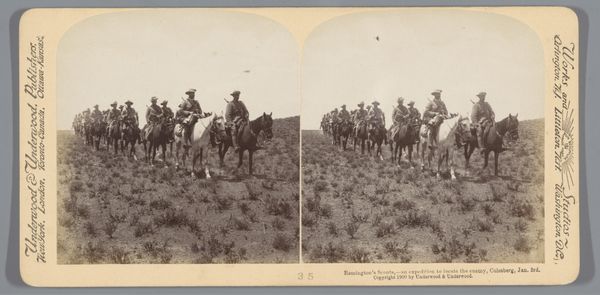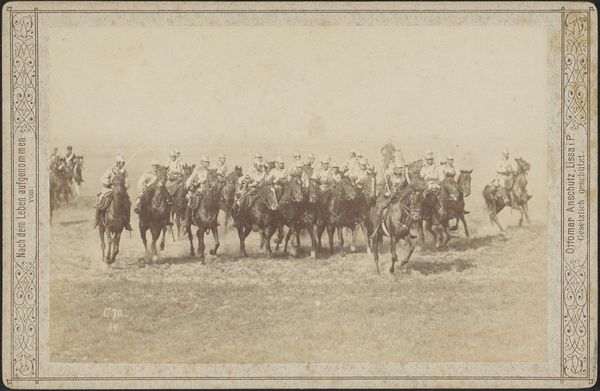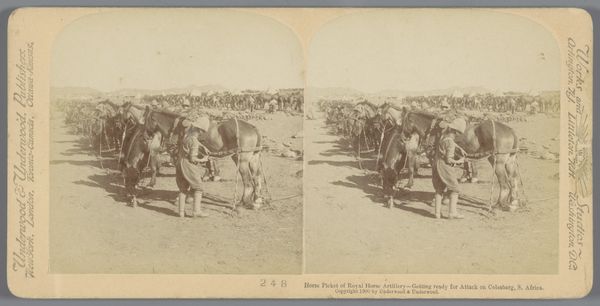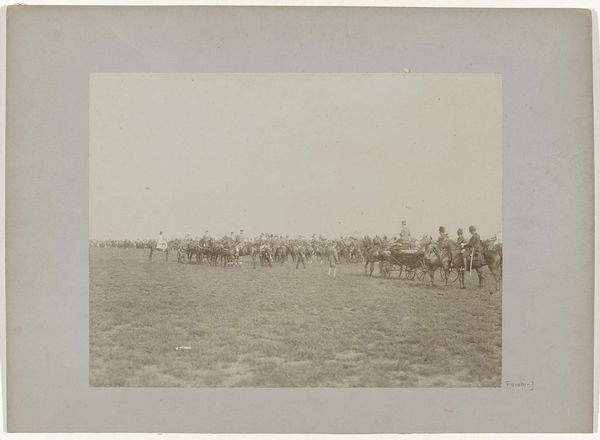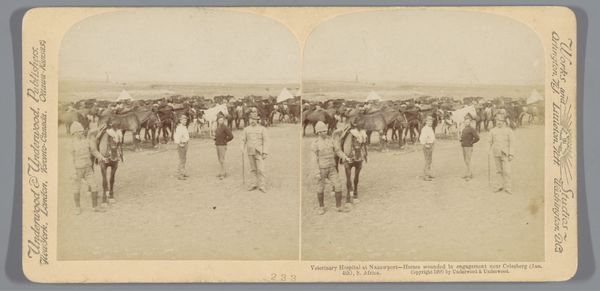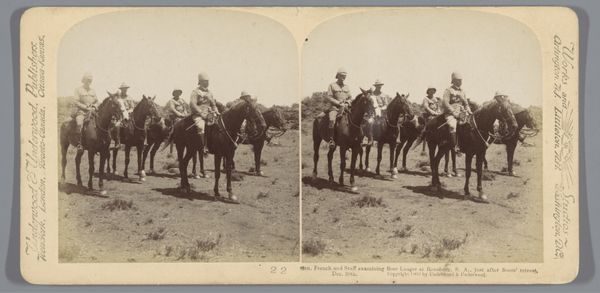
Geënsceneerde voorstelling van soldaten van de New South Wales Imperial Bushmen die in Mafeking wachten op inspectie 1901
0:00
0:00
photography, gelatin-silver-print
#
portrait
#
photography
#
gelatin-silver-print
#
genre-painting
#
realism
Dimensions: height 88 mm, width 178 mm
Copyright: Rijks Museum: Open Domain
Curator: This gelatin silver print from 1901, taken by Underwood & Underwood, presents a staged scene of soldiers from the New South Wales Imperial Bushmen awaiting inspection in Mafeking. The work offers a fascinating glimpse into the visual culture surrounding the Second Boer War. Editor: Immediately, I'm struck by the vastness suggested by the receding lines of soldiers and horses. The monochromatic palette contributes to a rather stark, almost desolate, feeling, despite the regimented rows. It feels expansive yet restrained. Curator: It's interesting that you read the repetition of form as restraint. One could also see this regimentation as an intentional representation of imperial order, reflecting the period’s political and social structures. This type of war photography, mass-produced for consumption back home, played a crucial role in shaping public opinion. Editor: Absolutely, I see your point about the order and its symbolic weight. But from a formal perspective, the photographic printing process emphasizes a certain tonal range. I see a carefully controlled distribution of light across the figures—a definite choreography within the image. Curator: And consider how Underwood & Underwood mass-produced these stereo views, allowing viewers to feel as though they were on location, part of a grand, historical event, deeply embedded in the machinery of the war effort and pro-British sentiment back in Australia. Editor: I am intrigued by this sense of depth achieved by using the stereo view. This not only adds dimension but almost suggests a performative aspect to their inspection – perhaps as a way of emphasizing to audiences the magnitude and efficiency of the British war machine. Curator: It’s clear, from examining images like these, that war was as much a public relations exercise as it was a military campaign. And in that way, understanding these photographic depictions allows us to gain unique access to the broader societal contexts. Editor: The image has given us both new ways to appreciate the image. By examining the artistic elements alongside its historical purpose, the true depth of the artwork shines through. Curator: Agreed. Understanding both formal qualities and historical context enhances our engagement with this early photograph, making us more informed viewers.
Comments
No comments
Be the first to comment and join the conversation on the ultimate creative platform.
